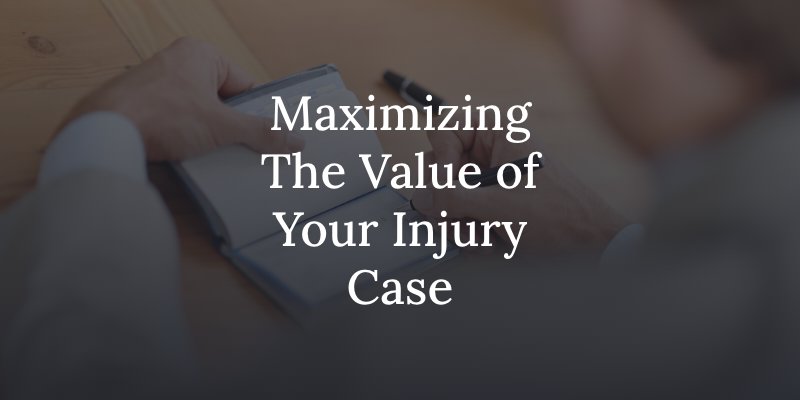A sudden serious injury can feel like someone pulled the rug out from under your life, leaving you facing a pile of medical bills, and at the same time, you may be unable to return to work due to the severity of the injury. Some personal injuries cause temporary damages, such as a hospital bill and a few days or weeks of lost earnings, but others have long-term adverse consequences, including permanent disability.

When the injury was caused by another party’s careless, reckless, or wrongful actions, the injury victim doesn’t have to absorb the financial consequences as well as the physical ones. A successful personal injury claim against the responsible party recovers maximum compensation for an injury victim’s damages.
What Evidence Proves the Value of a Personal Injury Claim?
A successful personal injury claim not only requires evidence of the responsible party’s liability for the accident due to their negligence, but also depends largely on proof that the injury victim suffered economic and non-economic damages from the injury. Economic damages are injury-related costs, such as medical expenses, out-of-pocket costs, and lost earnings.
Non-economic damages in personal injury claims include pain and suffering, and sometimes catastrophic injury damages for permanent disability, chronic pain, or disfigurement. Evidence used to prove the value of a personal injury case includes the following:
- The medical report with the details of the injury, the doctor’s recommended course of treatment, and the prognosis for recovery
- Medical bills, receipts, and invoices
- Receipts for out-of-pocket costs, such as for adaptive equipment and travel to see specialists
- Testimony from medical experts on the impact of the injury, including pain level and duration, and the level of disability involved
- Testimony from occupational therapists proving the impact on the injury victim’s ability to work at their previous job or to return to work at all
- Tax statements showing average annual income and employer statements proving lost wages
- Eyewitness testimony from family and friends to show the impact of the injury on the victim’s life
Insurance companies assign adjusters to the case to investigate all aspects of the injury, but their goal is to protect the company’s profits. This goal conflicts with the injury victim’s objective of maximizing the value of their claim to recover the full and fair compensation they deserve.
Can I Help Maximize the Value of My Personal Injury Claim?
Except in cases of incapacity, severe disability, or impairment, an injury victim can play a significant role in recovering their damages by taking steps to preserve evidence. The following actions help to document crucial evidence to optimize financial recovery:
- Using a cell phone at the scene of the injury to take photos of anything relevant to the cause of the injury and the injury itself, and to add the contact information of eyewitnesses
- Going directly to the hospital from the scene of the accident or incident and undergoing a thorough medical evaluation to document every injury
- Obtaining a detailed medical report and the doctor’s notes showing the injuries, treatment recommendations, and prognosis
- Following the doctor’s orders, filling all prescriptions, and attending every appointment
- Keeping a daily journal of their pain level and medical appointments
- Avoid posting on social media until after the completion of the claim process
- Avoid speaking to the insurance company on a recorded line
An injury victim should never accept an early settlement offer. These are typically low-ball offers intentionally made before the injury victim knows the full extent of their damages and requires signing away the right to a lawsuit. Instead, hire a personal injury attorney and direct the insurance company to speak to your lawyer.

